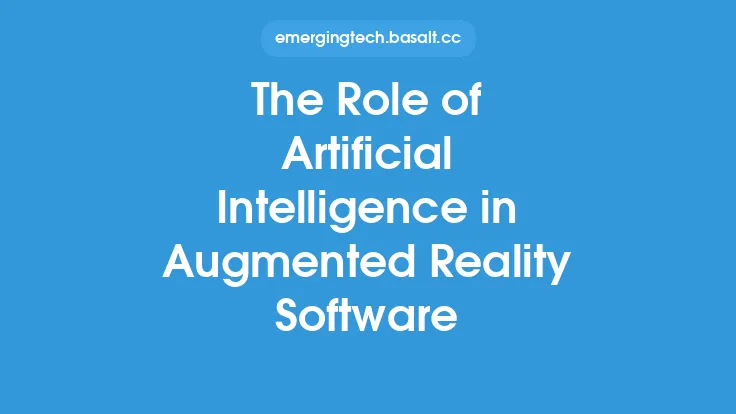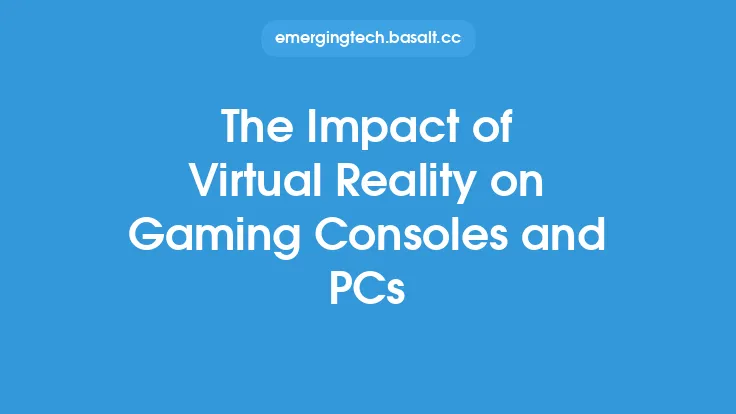The concept of tracking systems is fundamental to the operation of virtual reality (VR) hardware. Tracking systems enable the VR system to monitor the user's movements, translate them into in-game or in-experience actions, and provide a seamless and immersive experience. In this article, we will delve into the world of tracking systems in VR hardware, exploring their types, technologies, and applications.
Introduction to Tracking Systems
Tracking systems in VR hardware are designed to track the user's head, hands, and body movements, allowing the system to render the correct perspective and update the virtual environment accordingly. The tracking system is typically composed of sensors, cameras, and algorithms that work together to detect and interpret the user's movements. The accuracy and speed of the tracking system are critical to providing a realistic and engaging VR experience.
Types of Tracking Systems
There are several types of tracking systems used in VR hardware, each with its strengths and weaknesses. The most common types of tracking systems include:
- Optical tracking: This type of tracking uses cameras and sensors to detect the user's movements. Optical tracking systems are commonly used in high-end VR headsets and require a dedicated tracking area.
- Inertial measurement unit (IMU) tracking: IMU tracking uses a combination of accelerometers, gyroscopes, and magnetometers to track the user's movements. IMU tracking is commonly used in mobile VR headsets and is less accurate than optical tracking.
- Magnetic tracking: Magnetic tracking uses a magnetic field to track the user's movements. Magnetic tracking is commonly used in VR controllers and is known for its high accuracy and low latency.
- Acoustic tracking: Acoustic tracking uses sound waves to track the user's movements. Acoustic tracking is less common than other types of tracking but is known for its high accuracy and low cost.
Tracking Technologies
Several tracking technologies are used in VR hardware, including:
- Computer vision: Computer vision is a technology that enables computers to interpret and understand visual data from cameras and sensors. Computer vision is commonly used in optical tracking systems to detect and track the user's movements.
- Machine learning: Machine learning is a technology that enables computers to learn from data and improve their performance over time. Machine learning is commonly used in tracking systems to improve their accuracy and speed.
- Sensor fusion: Sensor fusion is a technology that combines data from multiple sensors to provide a more accurate and complete picture of the user's movements. Sensor fusion is commonly used in IMU tracking systems to improve their accuracy and reduce their latency.
Applications of Tracking Systems
Tracking systems have a wide range of applications in VR hardware, including:
- Head tracking: Head tracking enables the VR system to track the user's head movements, providing a seamless and immersive experience.
- Hand tracking: Hand tracking enables the VR system to track the user's hand movements, allowing the user to interact with virtual objects and environments.
- Body tracking: Body tracking enables the VR system to track the user's body movements, providing a more immersive and engaging experience.
- Controller tracking: Controller tracking enables the VR system to track the user's controller movements, allowing the user to interact with virtual objects and environments.
Challenges and Limitations
Despite the importance of tracking systems in VR hardware, there are several challenges and limitations to their development and implementation. These include:
- Accuracy and speed: Tracking systems must be accurate and fast to provide a seamless and immersive experience.
- Latency: Latency is a critical issue in tracking systems, as high latency can cause lag and disrupt the user's experience.
- Cost: Tracking systems can be expensive, especially high-end optical tracking systems.
- Complexity: Tracking systems can be complex, requiring sophisticated algorithms and sensor fusion techniques to provide accurate and reliable tracking.
Conclusion
In conclusion, tracking systems play a critical role in VR hardware, enabling the system to monitor the user's movements and provide a seamless and immersive experience. The types, technologies, and applications of tracking systems are diverse and complex, and their development and implementation pose several challenges and limitations. However, as VR technology continues to evolve and improve, we can expect to see significant advances in tracking systems, enabling more accurate, fast, and immersive VR experiences.





